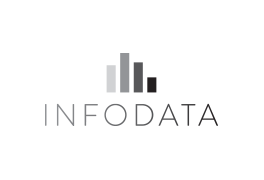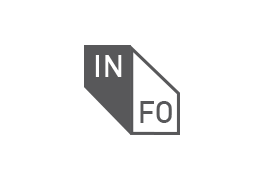
EMPOWERING GROWTH WITH REAL DATA

ICT (information and communications technology, or technologies)
INTRODUCTION
Prathibha is a trained graduate mathematics teacher working in a village in Chamarajanagara. Recently Prathibha organized a "Mathematics Day" on the eve of Ramanujan's birthday. She organized a video show on Ramanujan's life and his contributions. She had identified this video from YouTube. Based on the learning form the video, students took a quiz in the afternoon. Since the quiz was online, she could announce the winner immediately. Prathibha used google form for this purpose. Prathibha shared pictures of the event in the subject teachers' group via WhatsApp messenger. One of her friends suggested her to open a blog on her experiences. She has a blog now, in which she regularly posts her teaching experiences and reflections. Prathibha uses web tools and technology in her class regularly. She finds that technology integration in teaching has made the learning experience very engaging. Prathibha is excited about the potentials of technology use in the classroom.
This is only an example to show how information and communication technologies have started influencing the classroom practices. With the world becoming more and more digital with time, our classrooms are also headed in this direction. This unit would introduce to you the basic concepts and ideas related to the field of Information and Communication Technologies.
In this unit we are going to explore the concept of Information and Communication Technologies (ICT), its evolution and its nature. We will also understand the scope of ICT in our daily life in general and education in particular. We discuss the features of ICT that makes it widely applicable. We also learn about few concerns regarding safe use of ICT.
OBJECTIVES
After studying this unit, you will be able to:
-
explain the meaning of Information and Communication Technology (ICT)
-
give an overview of applications of ICT in general and educational context in specific
-
Identify possible information tasks that can be done with technology
-
identify major landmarks in ICT evolution
-
analyze the strengths and concerns associated with ICT use
MEET Mr.Tamojit

OUR STORY
I'm a paragraph. Click here to add your own text and edit me. It’s easy. Just click “Edit Text” or double click me to add your own content and make changes to the font. Feel free to drag and drop me anywhere you like on your page. I’m a great place for you to tell a story and let your users know a little more about you.

OUR VISION
I'm a paragraph. Click here to add your own text and edit me. It’s easy. Just click “Edit Text” or double click me to add your own content and make changes to the font. Feel free to drag and drop me anywhere you like on your page. I’m a great place for you to tell a story and let your users know a little more about you.

OUR TECHNOLOGY
I'm a paragraph. Click here to add your own text and edit me. It’s easy. Just click “Edit Text” or double click me to add your own content and make changes to the font. Feel free to drag and drop me anywhere you like on your page. I’m a great place for you to tell a story and let your users know a little more about you.
WHAT IS ICT?
We are in a digital era. It is difficult to think of any event in our daily life that is not using Information and Communication Technology. Our schools and classrooms are no exceptions. This course is meant for introducing you with these technologies with the intension that you meaningfully integrate technology in your practices related to teaching and learning.
As an ordinary citizen as well as a teacher, you handle enormous data all the time. Data refers to facts, events, activities and transactions which have been recorded. Data is the raw material from which information is produced. Number of boys and girls in your class is a factual description of your classroom. This is an example of data related to the students in the class. In this sense, data is a description of the world. Information is making meaning from the data. Based on the data, you can conclude if girls are more in number in your class. This conclusion is information. In other words, information is processed data. Most of the decisions taken in and around the world by and large are based on the data and information. Information is the key guiding force of the world today.
For a wider use of the information, the information must be communicated to people. It is only when the information reaches the intended audience, the purpose of creation of information as well as its communication would be served .
Let us take an example. As a teacher, you are organizing a teacher parent meeting. Details of the same need to be communicated to the concerned parents. This should happen within a time frame. As you know, it is neither easy to physically reach every parent within a given time, nor desired. With the availability of technology, it is possible that a teacher now not only can reach the parents but also interact with them in real time. A simple WhatsApp group would serve this purpose. This is only an illustration to say how technology has simplified many complexities of our life.
The tasks you as a teacher engage in during the school time and outside require you to generate information very frequently. For example, you need to create a worksheet for a class. You designed a worksheet template. Since the worksheet is for the class use, you need multiple copies of the worksheet. You have to take printout of the worksheets. You transfer the worksheet template to your mail or carry it in a pen drive. In other words, you have stored the information either in a cloud storage service (mail cloud) or in a storage device (pen drive).
You have successfully done the worksheet activity. You would like to see how the students progressed through the activities. For this purpose, you transfer the information of student responses into a spreadsheet to analyze. You would also communicate the students’ progress to their parents through mail, before recording these developments in the students' e-portfolio. The students’ e-portfolios are digital display of students’ progress as well as your teaching.
You would have noticed that the information created, stored, processed, transmitted, displayed and shared is in digital form and through electronic media. The technologies used in these processes are Information and Communication Technologies.
Traditionally also radio, television, and print media were the widespread technologies used for communication. The digital revolution has changed the way these traditional technologies function. The analog television has become digital television. In addition to the printed newspaper we also have electronic versions. Along with traditional radio, we also have online radio. All these have started appearing in the classroom to make the learning experiences rich.
With this example, let us try to arrive at a definition of ICT. UNESCO has defined ICT as forms of technology that are used to transmit, process, store, create, display, share or exchange information by electronic means. It includes not only traditional technologies like radio and television, but also modern ones like cellular phones, computer and network, hardware and software, satellite systems and so on, as well as the various services and applications associated with them, such as videoconferencing.
OUR JOINT COMPANIES







